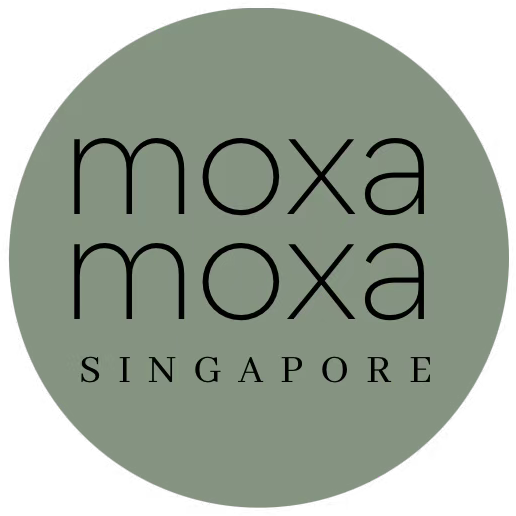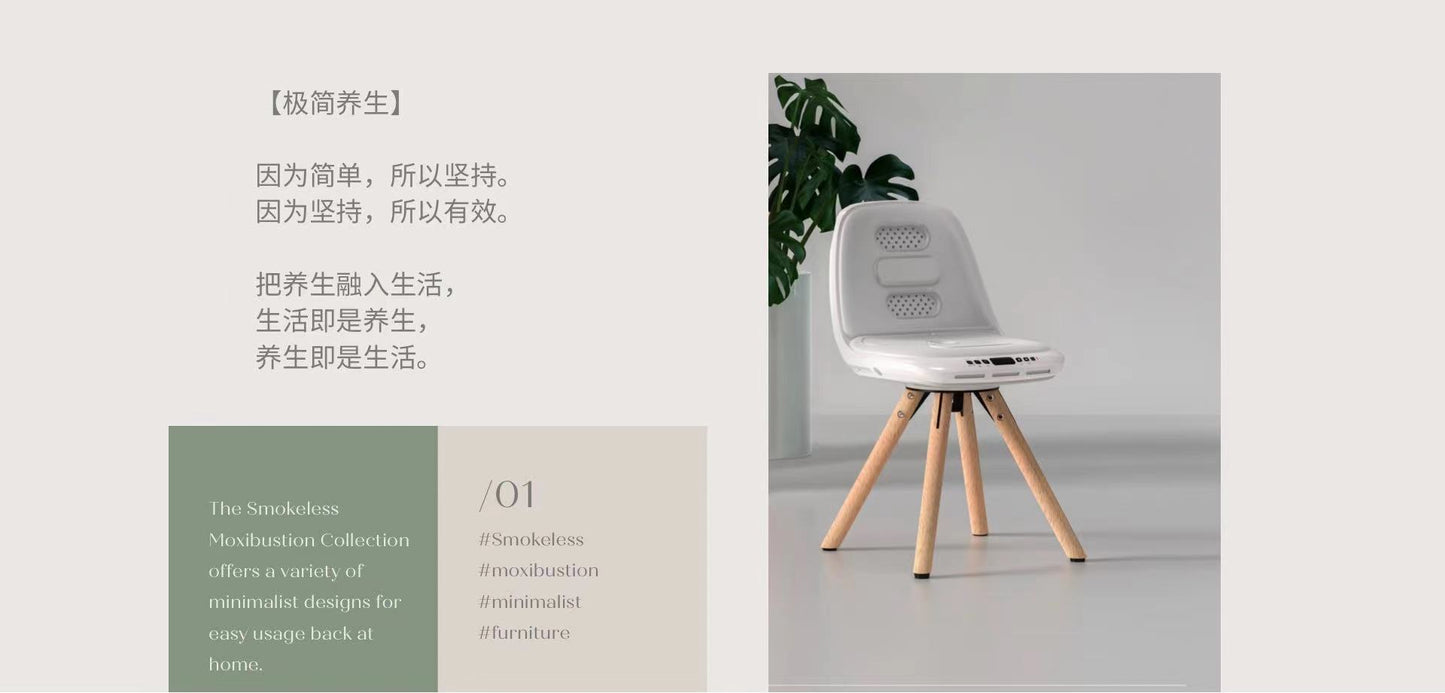This store requires javascript to be enabled for some features to work correctly.
What is scraping (also known as Gua sha)?
Gua sha is a traditional Chinese healing method in which a trained professional uses a smooth-edged tool to stroke your skin while they press on it. This motion raises small, red, rash-like dots that show under your skin called petechiae.
According to TCM, there are 12 meridians running across our bodies. Gua sha can activate those channels and promote detoxification, speeding up healing processes. Gua sha can be used for various conditions such as muscular pain, migraines, fever, uncomfortable symptoms (e.g. breast tenderness, hot flashes) caused by hormonal fluctuations.
Benefits and therapeutic effects of scraping
There are a few common unhealthy habits that modern people have, as follows:
- Overeating and irregular mealtimes. This places a huge burden on our digestive systems, causing our digestion, absorption and defecation processes to become sluggish.
- Staying up late. Late sleeping and not sleeping enough can compromise on our body’s detoxification, repair and rejuvenation.
- Sedentary. Prolonged periods of sitting down slows our blood circulation, causing waste matters to stay in our bodies for a longer time.
- Stress. Overworking our brains is detrimental to our Qi and Blood. Stress also affects the Liver in TCM.
All these factors come together and cause fatigue, sluggishness, hormonal imbalances, metabolic dysregulation, poor memory, constipation and digestive upsets etc. This is because there is too much waste accumulation in the body, causing blockages in meridians, in turn causing Qi and Blood to not flow smoothly and thus affecting our microcirculation. In the long run, this can cause serious illnesses such as high cholesterol, diabetes, cardiovascular diseases, breast hyperplasia, menstrual cramps, autoimmunity, inflammatory diseases, bone and joint pain etc.
Gua sha is an effective method to facilitate detox, improve microcirculation, invigorate the blood and remove stagnation, hence relieving pain syndromes caused by blockages and improving our overall skin tone in the process as well.
During gua sha, our pores will be open, any accumulation of waste and toxins can be released from the body parts through ‘Sha’—tiny red/purplish spots that appear during scraping (so the more ‘Sha’ the area shows, the more toxins the area has accumulated). The process of ‘Sha’ formation has anti inflammatory and anti microbial effects on the body as well. Different from ingesting medications to achieve these effects, gua sha activates our own Qi and Blood by improving microcirculation, increasing ratios of immune active cells in skin tissues, speeding up metabolism and detoxification.
Research has shown that Gua Sha treatment can up-regulate the innate and adaptive immune functions of the skin and boost the response against intradermal antigens. Hence, gua sha can also help improve conditions as follows: autoimmunity, inflammatory diseases, allergies, malaise, asthma, frequent flus.
Gua sha along meridians that correspond to different organs can improve organ functions and allow the body to detox effectively through defecation, sweating and urination.
Things to note, precautions and contradictions for scraping
Things to note before and after scraping:
- Disinfect gua sha tools using 75% alcohol before treatment.
- Make sure the room is warm enough and not too cold (ideally around 25 degrees Celsius).
- Scraping opens up our pores, causing more water loss. Hence, patients should consume a glass of warm water (with a bit of sugar ideally) after scraping treatment and rest for 15-20 minutes.
- Do not shower within 2-3 hours after scraping, and do not shower with cold wate within 24 hours after scraping (warm water is allowed 2-3 hours after).
- Avoid strong winds and cold environments after scraping treatment as our pores are wider, thus more vulnerable to the invasion of external pathogens.
- Gua sha can help with chronic conditions together with medication. For acute conditions, do seek medical help immediately and use guasha alongside if you wish to.
Contradictions:
- Prohibited use on pregnant mums’ tummy, lumbar and sacrum areas, as well as ladies’ nipples. (not recommended to do any scraping on pregnant ladies, if scraping treatment is required, do seek professional help to do so, e.g. by a licensed TCM practitioner.)
- Prohibited for patients with blood disorders that cause bleeding tendency such as leukemia and thrombocytopenia (low platelet count).
- Prohibited for patients with highly sensitive skin, skin diseases, wounds or bleeding.
- Prohibited use on wounds, fractures, head and neck of a baby when his/her fontanelle is still not closed entirely.
- Prohibited use for patients who are drunk, overly hungry, thirsty or tired.
- Prohibited use for patients with heart failure, kidney failure, ascites (build-up of fluid in the abdomen, often due to liver disease), diabetes with severe complications, severe swelling of the limbs
- Careful use on the old, frail and weak patients (consider using light moxibustion to replenish Qi before scraping)
- Prohibited use on obvious arteries and veins.
- Scrape upwards lightly on varicose veins and swelling on lower limbs.
What to do if adverse effects arise during scraping?
- It is normal to have slight bruising or skin discolouration after scraping, for example: red, purple, dark spots or patches. They will fade away after a period of time, ranging from a few days to two weeks.
- After scraping, especially for the next 1-2 days, it is normal to experience slight pain, itch, rash, crawling sensation, hot or cold sensation at the areas where scraping was performed at.
- During scraping, if there’s any sign of dizziness, heart palpitations, nausea, cold sweat, cold limbs, pale face, fainting, stop the treatment immediately. Get the patient to lie down and lift up his/her legs slightly above the ground. Then get him/her a glass of warm sweet drink. You can also use the side of the gua sha tool to perform acupressure on Bai-Hui, Ren-Zhong, Nei-Guan, Zu-San-Li, Yong-Quan.
- For first timers receiving gua sha, mentally stressed or physically weak patients, gua sha has to be light. Do not perform scraping when patient is hungry, fatigued, extremely thirsty. Therapists have to be on constant alert, looking out for any signs of discomfort and ask the patient from time to time how is he/she feeling. This is to prevent serious adverse effects and to take action as soon as possible when any sign of adverse effect is noticed.
Order of different body areas to go in, direction, duration and frequency of scraping
Order:
Downwards from the head to the neck and down the back, then from the chest area, down to the abdomen area, upper limbs, and finally lower limbs. Other than the Ren and Du meridians that lie vertically in the middle, the rest of the meridians run on both sides of our bodies, hence the acupuncture points correspond to each other on both left and right sides. Take note to do scraping on both sides.
Direction:
Downwards (head to lower waist, chest to abdomen). Outwards (shoulders to fingers, thighs to toes).
Duration:
- Scrape each area less than 20 motions, or until tiny red spots known as ‘Sha’ appear. If there is no ‘Sha’, it’s okay to move on to the next area, do not use too much force. If more ‘Sha’ continues to show on the skin, continue scraping until no more ‘Sha’ appears.
- Start with using lesser strength, increase strength of Gua Sha progressively.
- Choose 3-5 body areas ideally for treatment.
- The exact duration of scraping depends on the patient’s age, body constitution, illness and the area of where scraping is conducted.
- For regular or daily maintenance, scraping duration should be less than 30 minutes, with each area taking up 10-20 minutes.
Frequency:
- After each scraping session, wait for the tiny red spots (‘Sha’) to fade and disappear before scraping again (usually 3~6 days). 7-10 times of scraping counted as 1 course of treatment.
- If scraping is done as a general conditioning treatment, there will not be a need to scrape till ‘Sha’ appears. Hence, you can scrape every 1-2 days.

